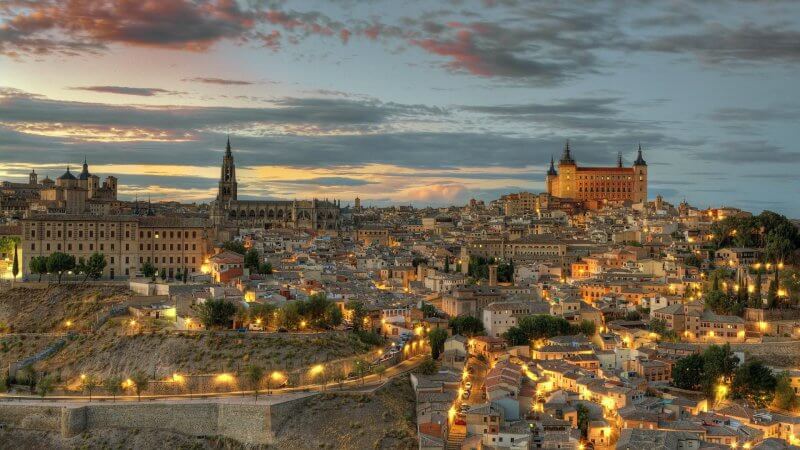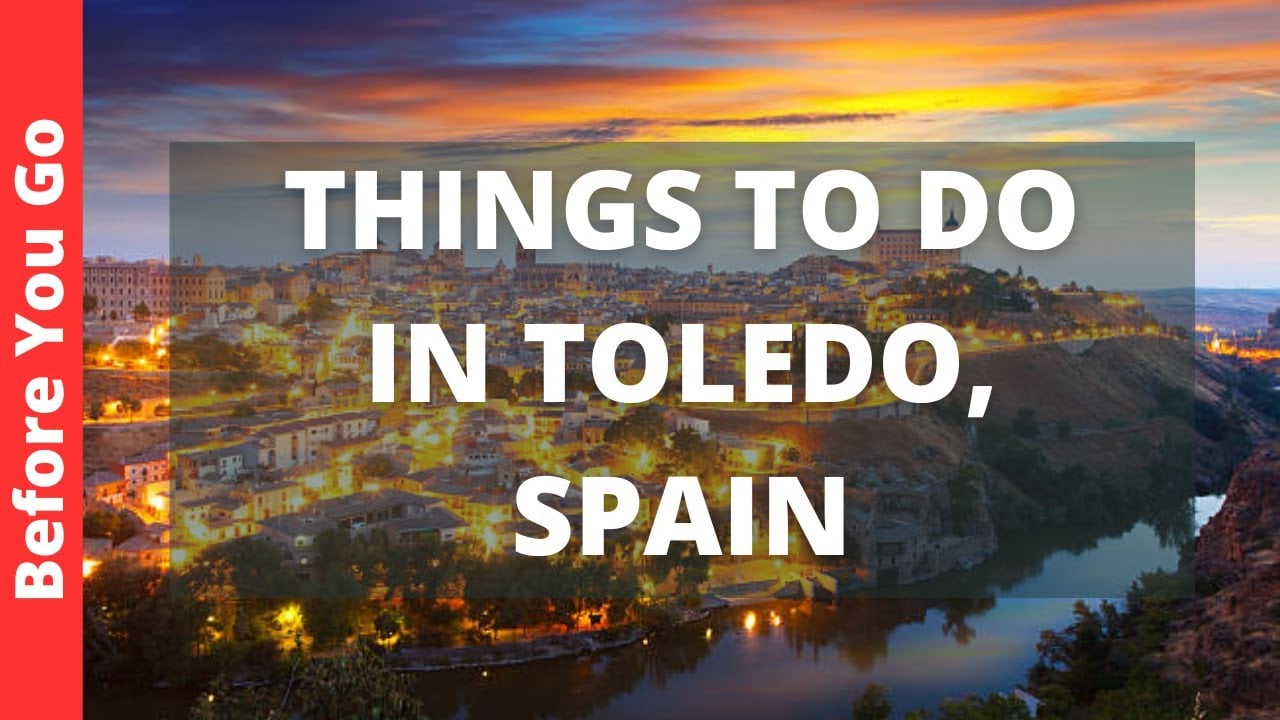Toledo (Spain) is one of the most beautiful and interesting cities in the country. It is effectively located on a rocky hill, which is almost completely surrounded by the Tagus River.
The Spaniards like to talk about it like this: “If you haven’t been to Toledo, you haven’t seen Spain.” And they also call it the city of three civilizations, because its architectural appearance clearly shows the influence of three cultures: Christian, Arab and Jewish. Toledo, once the capital of Spain, has almost completely preserved its medieval appearance.
Toledo is located in the central part of Spain and is the capital of the province of the same name. The city covers an area of 232 km2 and is home to about 79,000 people.
Interesting fact! Edged weapons called “Toledo Blades”, which are produced in Toledo as souvenirs, are well-known and popular all over the world.
Attractions
There are many significant historical sites in Toledo, and it takes a couple of days to see them all. This review contains photos and brief descriptions of the most outstanding sights of Toledo, which all guests of the city are trying to get acquainted with.
Puerta de Bisagra Gate
The Bisagra Gate is a significant part of the ancient fortress wall of Toledo. They were built in the middle of the XVI century and they regulated the entrance and exit from the Old Town in the north. You can still pass through them to the Old Town.
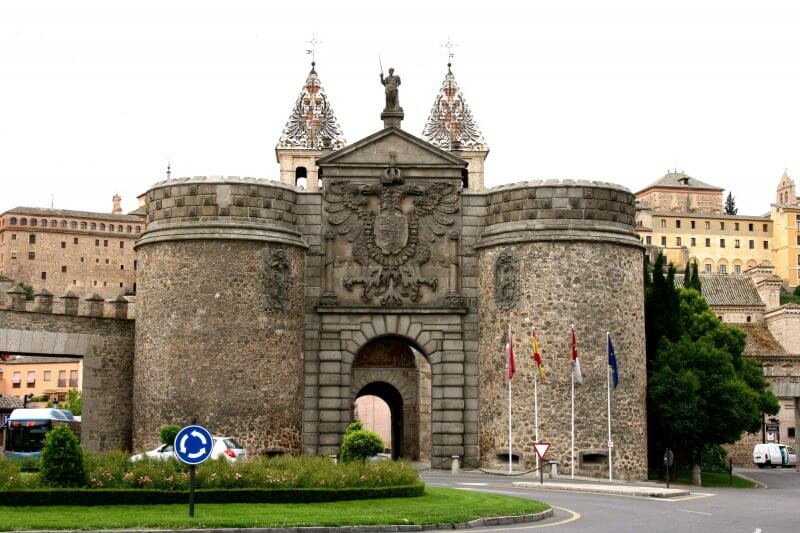
Despite its defensive function, this landmark looks very elegant. On the outside of the gate there are round towers, and in the center, above the entrance portal, there is a carved image of a huge double-headed eagle from the time of Emperor Charles V. On the inside of the gate there are also two towers, and between them is the coat of arms of the city – the Habsburg double-headed eagle. This grandiose structure is crowned with a statue of the Guardian Angel of the city of Toledo.
Place of interest: Calle Real del Arrabal, 26, 45003 Toledo, Spain.
Old Town
The old city of Toledo can be seen and experienced only if you walk through its streets on foot – by car or tourist train, it will be completely different.
Interesting fact! Old Toledo is an open-air museum that has been designated a UNESCO World Heritage Site since 1986.
The maze of ancient narrow streets resembles the scenery for a movie, but everything is real: the stone pavement, ancient walls, elegant bars on windows and balconies. Tourists in the Old Town will also find numerous souvenir shops, cafes and restaurants.
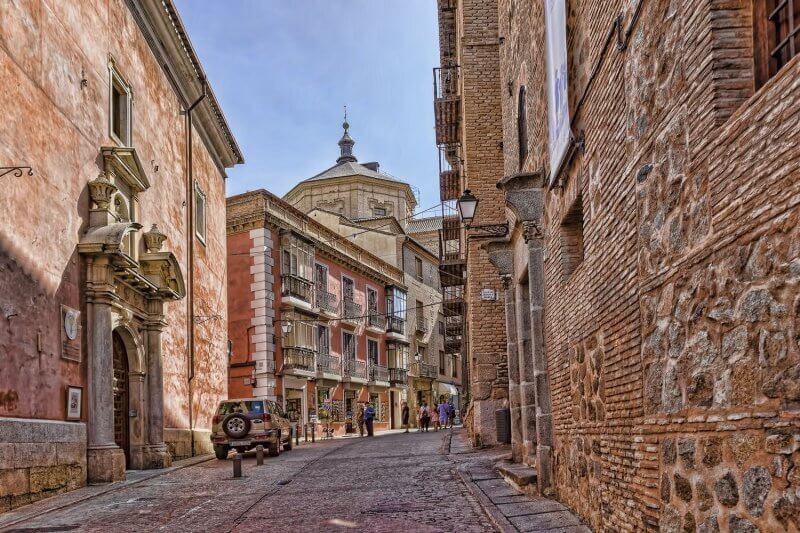
The main attraction of the Old Town is the Toledo Cathedral of St. Mary. This silent witness to a variety of historical events deserves special attention.
A tip! Since the streets in the historical part of Toledo are very narrow and confusing, it is advisable to have a detailed map of the city with you for a walk. You can get it for free at the tourist information center.
Transito Jewish Quarter and Synagogue
In the Middle Ages, the Jewish Quarter was considered the most luxurious and richest in Toledo. It was surrounded by a wall, and on its territory there were 11 synagogues. Such prosperity aroused the envy of Christian neighbors, and in 1492 many Jews were killed and the survivors fled Spain.
Small tiles with the image of Minora and various Jewish symbols embedded between the paving stones and on the houses look very touching.
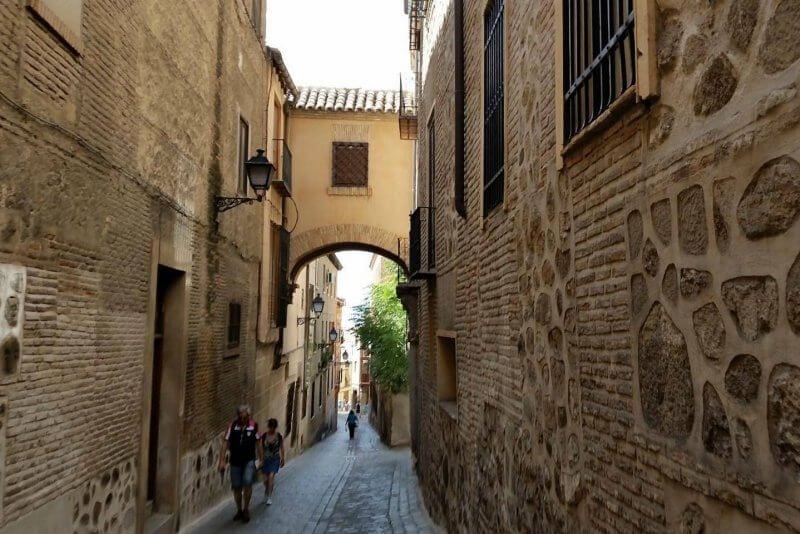
The Jewish Quarter is located in the west of the city of Toledo in Spain, in the area of Reyes Catholicos Street. Although the modern Jewish Quarter is only a small part of the ancient Jewish Quarter, there are many significant attractions here. One of them is the Synagogue del Transito.
Behind the modest facade of this synagogue hides a chic interior in the Moorish style. Since 1985, the Sephardic Museum – the so-called Spanish Jews-has been operating in the building. The Museo Sefardí features historical documents, religious paraphernalia, and works of art that tell the story and culture of the Sephardim since ancient times. In the halls there are information posters in English with a general description of the exhibition, but not of each exhibit.
Address of the Transito Synagogue: C / Samuel Leví, s / n45002 Toledo, Spain.
Site of this attraction: www.culturaydeporte.gob.es/msefardi/home.html.
A full ticket to the museum costs 3 €, a reduced one (visitors under 18 and over 65) costs 1.5 €. Admission is free on Saturday after 14:00 and on Sunday.
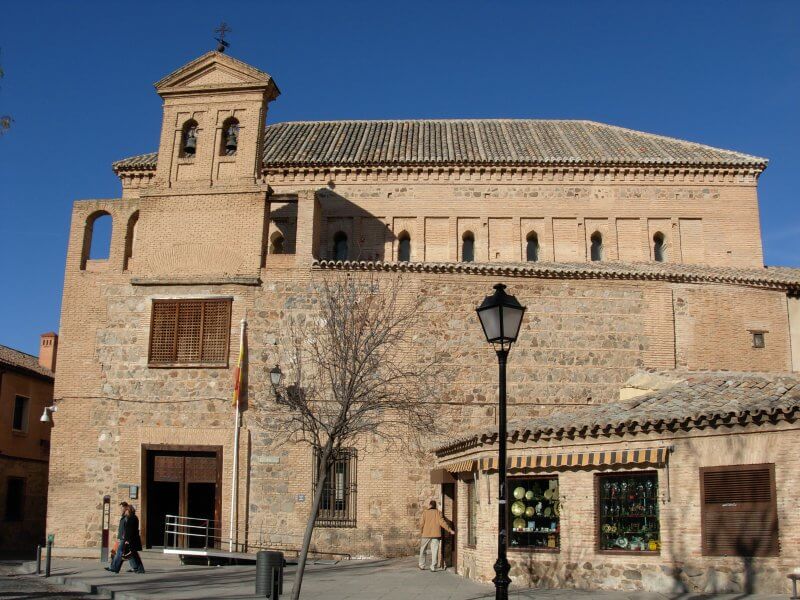
Opening hours of the Sephardic Museum:
- Sunday from 10: 00 to 15: 00;
- Tuesday-Saturday: from November to February from 9: 30 to 18: 00, and from March to October from 9: 30 to 19: 30.
El Greco House Museum
The Jewish Quarter has a special attraction that is known not only in Toledo and Spain, but also outside the country: the Museo del Greco. The museum is not at all like traditional art galleries – it is a house that recreates the lifestyle of a famous artist of the XVI century. Here everything is literally imbued with the invisible presence and the strongest energy of El Greco. Nevertheless, the main asset and attraction of the museum is the world-famous artistic creations of the painter.
Interesting fact! The museum was created in order to save from export from Spain and sales to private collections of paintings by El Greco.
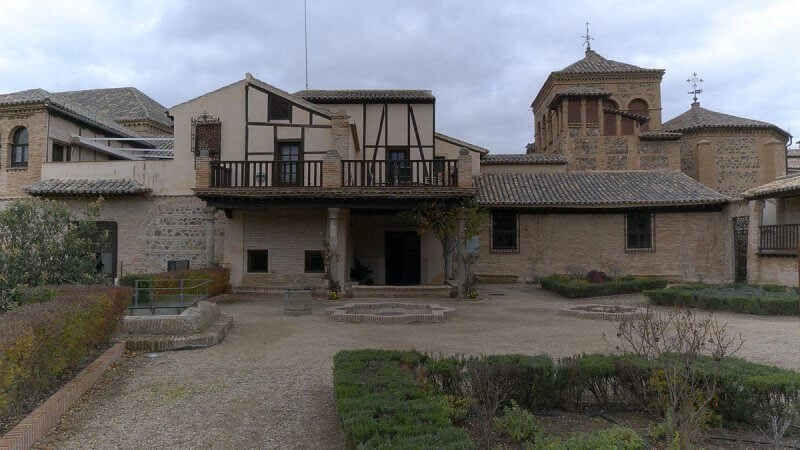
Museo del Greco address: Toledo, Paseo del Transito, s / n 45002, Toledo, Spain.
Museum website: www.culturaydeporte.gob.es/mgreco/inicio.html.
Work schedule:
- Monday is a day off;
- Sunday-from 10: 00 to 15: 00;
- Tuesday-Saturday: from 9: 30 to 19: 30 from March to the end of October and from 9: 30 to 18: 00 from November to the end of February.
The entrance ticket costs 3 €, for seniors and visitors under 18 years of age, admission is free. Free admission for all comers is provided on Saturdays from 16: 00 until closing and on Sundays.
Church of Santo Tome
Another attraction of Toledo is the Church of Santo Tome. Rebuilt under King Alfonso VII from a mosque, it attracts only with its bell tower, which is an example of the mudejar style. Otherwise, it is a modest and not at all outstanding building.
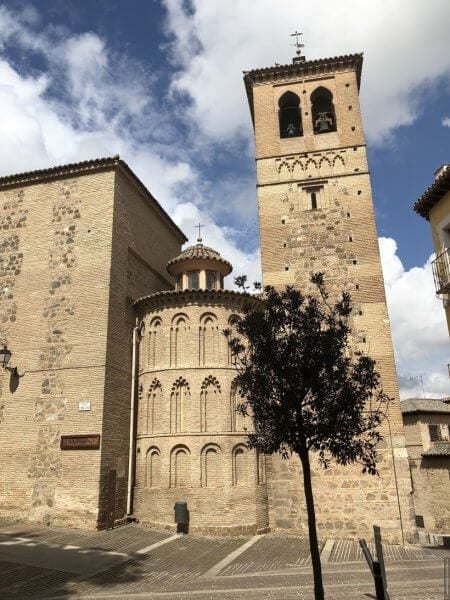
Nevertheless, many tourists try to visit this attraction, because in the Concepcion Chapel there is one of the most famous creations of El Greco – the canvas “The Burial of Count Orgas”. The painting, whose dimensions (4.8 x 3.6) meters, is inscribed in the arch of the building, and has never been taken out of its walls.
Interesting fact! Many of the characters depicted on the canvas were copied by El Greco from his contemporaries. For example, the little page is a portrait of the artist’s son Jorge Manuel, and the knight is practically a self-portrait.
The Church of Santo Tome is located in the Jewish Quarter: Plaza del Conde, 4, 45002 Toledo, Spain.
It’s open every day at this time:
- from March 1 to October 15 – from 10: 00 to 18: 45;
- from October 16 to February 28 – from 10: 00 to 17: 45.
A full ticket costs 2.5 €, a reduced ticket costs 2.2 €.
Important! El Greco’s painting “The Burial of Count Orgas” is forbidden to be photographed!
Monastery of San Juan de los Reyes
Another interesting attraction is the Catholic monastery of San Juan de los Reyes, which rises on the shore above the Tagus on the western side of the city.
The monastery was founded by Catholics Isabella I and Ferdinand II in the XV century,and it is still active. There are a church and a courtyard provided on-site.

The monastery church was built as a tomb for the royal couple, which explains the luxury of the building. As confirmed by the photos and descriptions, this attraction of Toledo is really a royal level. The walls of the church are covered with numerous royal coats of arms and heraldic shields. In the upper gallery there is a beautiful, immaculately executed coffered ceiling made of larch.
The patio is very nice and cozy. Especially interesting are gargoyles, among which there are figures of a cat, a monk.
Address of the monastery: Calle Reyes Catolicos, 17, 45002 Toledo, Spain.
The attraction is open to the public daily:
- in winter (from October 16 to February 28) from 10: 00 to 17: 00;
- in summer (from March 1 to October 15) from 10: 00 to 18: 00.
Admission is free for children under 11 years of age, and for other visitors-2.8 €. Payment is made in cash, but if the amount exceeds 5€, you can pay by card.
Alcazar Castle
The Alcazar Castle is one of the main attractions of the city of Toledo in Spain. This monumental structure is located on the highest hill of the city, so it is perfectly visible from any area.
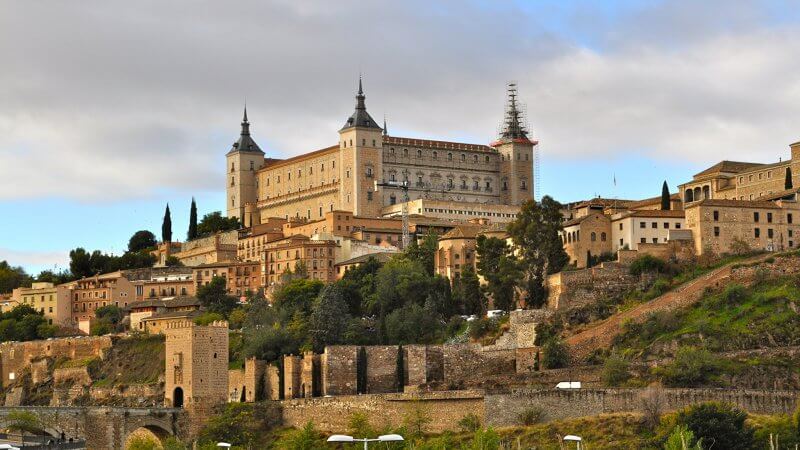
The Alcazar is a beautiful, powerful quadrangular structure with a strict, precisely calibrated silhouette. Each of its square watchtowers has a pyramidal roof and is topped with a sharp spire, and the facades are decorated in different styles: Medieval, Renaissance, Plateresco and Herresco. The open courtyard of the castle, where the monument to Charles V stands, is surrounded by a two-level colonnade with semicircular arches.
The foundation of the Alcazar Castle was laid by the Romans in the III century, who built a citadel here. Over the centuries, this structure has been a royal prison, a military barracks, a silk workshop and the Royal Infantry Academy. It was repeatedly completed and rebuilt, and during the civil war of 1936, it was almost completely destroyed. In the mid-twentieth century, Spanish architects carried out a large-scale reconstruction, so it can be argued that what is now called the Alcazar Castle is a new model.
The Military Museum and Library of Castilla-La Mancha are located on three floors of the building. The Military Museum is large and modern, but most of the exhibitions can only interest fans of the history of the Spanish army.
- Address of the attraction: Cuesta de Carlos V, 2, 45001 Toledo, Spain. Website: http://www.museo.ejercito.es/.
- Opening hours: Tuesday to Sunday from 10: 00 to 17: 00.
- The entrance fee is € 6.15, and Sunday admission is free. To view the upper part of the building, you need to pay €3.69.
San Martin Bridge
The San Martin Bridge was built in the 13th century to provide access to Toledo from the west.
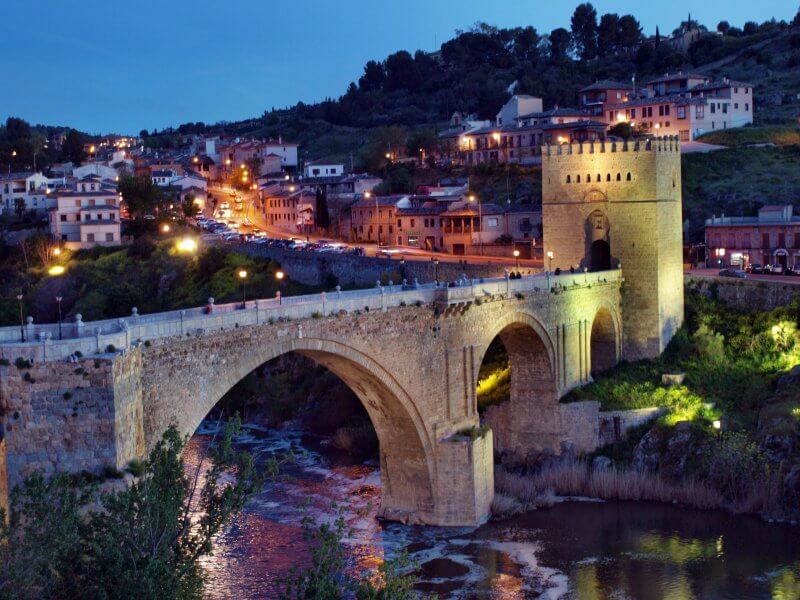
The impressive and monumental bridge has 5 spans: the central one, with an exquisite arch, on the sides of which there are 2 spans with narrow arches. Both sides of the bridge are fortified with gate towers:
- the right one, closest to the city center, is hexagonal and dates back to the 13th century;
- the far left one was built in the XVI century and looks more elegant: it is decorated with the coat of arms of King Charles V and a statue of St. Julian.
From the St. Martin’s Bridge, you can enjoy scenic views of the historic center and the Tagus River (it really looks like a river here, and not like a stream – this is rare in hot Spain). From the bridge there is a descent down, so if you want, you can go for a walk along the river. Nearby is a small park of the same name, which is also pleasant to walk through. When visiting the bridge and the places closest to it, there will be many opportunities to take beautiful photos with views of Toledo in Spain.
Place of interest: Bajada San Martín, 45004 Toledo, Spain.
Railway Station
Estación del Ferrocarril is the first attraction that tourists who come to Toledo by train from Madrid (only Madrid trains arrive here) will see.
The building was built in 1919 in the Neomudehar style and is recognized as one of the most interesting examples of this style. The station looks like a medieval Moorish palace: elegant, light, elegant. Bright and beautiful stained glass windows, wrought-iron bars and railings, a ceiling with carvings and paintings, tiled walls-all this makes an indelible impression. Especially impressive is the wall with old cash registers, which have not been working for a long time.
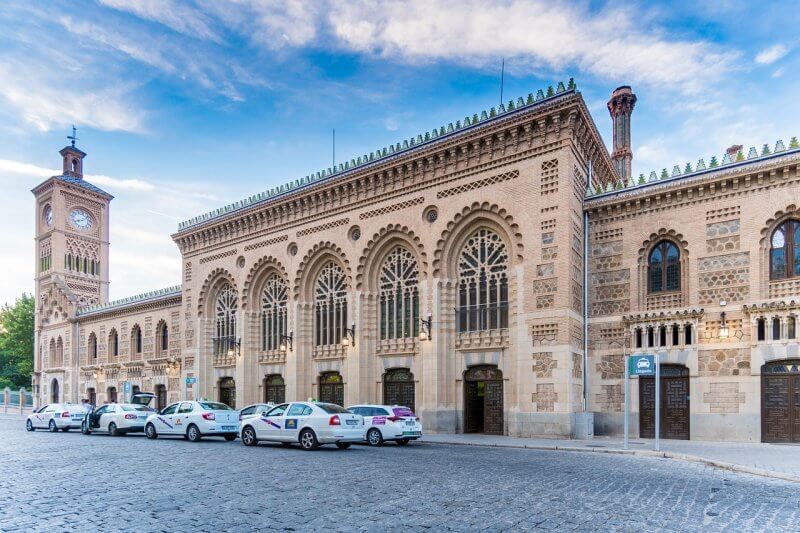
Adjacent to the main building is a beautiful 5-story tower with a large-scale clock face.
Important! Bas Tourist buses depart from the station square every hour, providing a general view of Toledo and introducing you to the main attractions of the city.
Train station address: Paseo Rosa s / n, 45006 Toledo, Spain.
Mirador del Valle Observation Deck
When the streets of Toledo are fully explored and explored during walking tours, it’s time to visit the observation deck: the city will appear completely different from what it looks like up close. Mirador del Valle offers views of downtown Toledo with its Alcazar and other attractions.
The site can be reached on foot by crossing the Tagus River over the Alcantara Bridge or Juanelo-it’s not very far, but it’s a bit tedious, as you’ll have to go up the road. You can also get there by regular city bus or tourist bus – the latter specially stops here for a few minutes so that everyone can enjoy the views and take photos. Photos of the city of Toledo and its immediate surroundings taken from the site look like postcards.
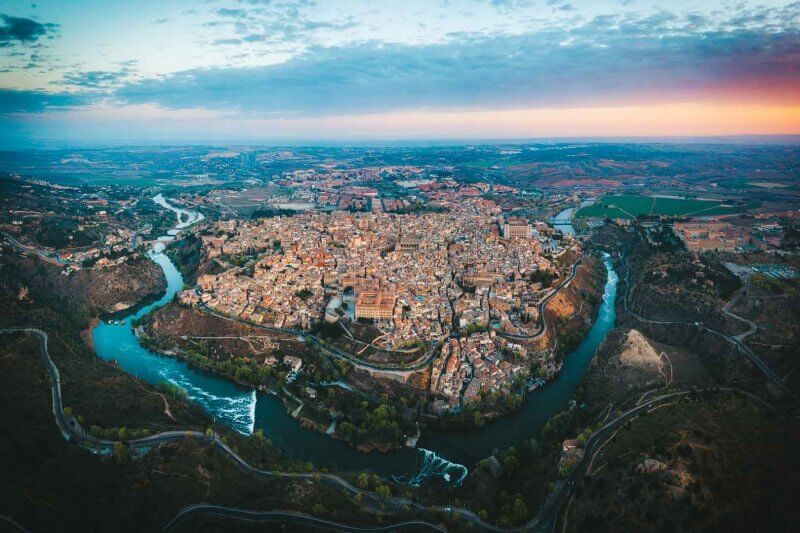
Mirador del Valle address: Ctra. Circunvalación, s/n, 45004 Toledo, Spain.
How to get to Toledo from Madrid
Toledo and Madrid are 73 km away and can be reached by bus or train.
When choosing how to get from Madrid to Toledo on your own, you should use the Omio service — www.omio.ru. This service makes it possible to compare all existing travel options for different types of public transport by the duration and cost of the trip, and also allows you to buy tickets online for the train and bus of any carrier.
Intercity buses
There are no problems getting from Madrid to Toledo by bus: during the day, there are flights from different bus stations every 20-30 minutes. Many Spanish companies are engaged in transportation on this route: Alsa, Samar, Eurolines, Jiménez Dorado.
Alsa
Bus services of this company are available from 7: 00 to 24: 00 with an interval of 30 minutes-1 hour. The starting point is the bus station at the Plaza Eliptica metro stop.

Direct route flights – direct, the trip lasts 1 hour. There are also flights where buses make 8-10 stops – in this case, the journey time increases to 1 hour and 30 minutes.
Official website of the carrier, where you can view the exact schedule: www.alsa.com.
The cost of a ticket from Madrid to Toledo is 5.55€, you can buy it at the ticket office or at the terminal at the bus station.
Samar
Buses of this company run from 7: 00 to 22: 00. The starting point is the Southern bus Station of Madrid.
Depending on the number of stops, the journey time is 1-2 hours.
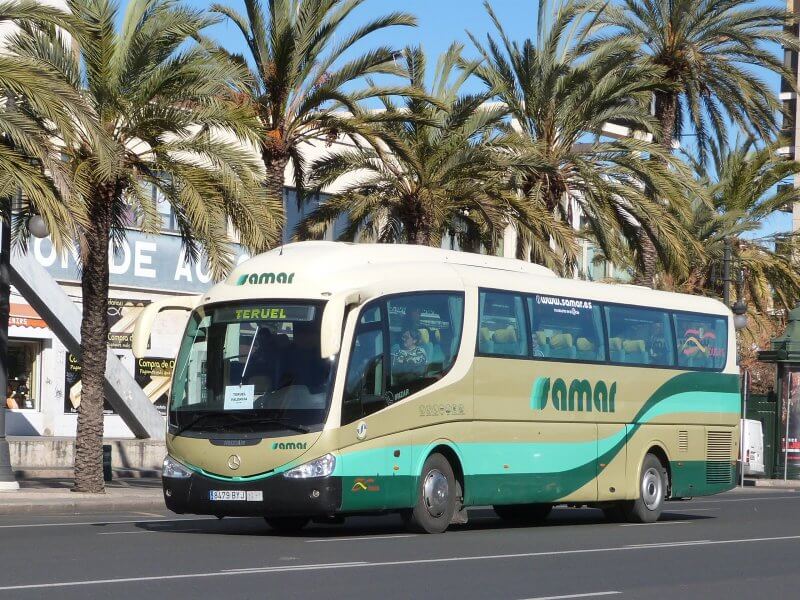
The ticket costs € 6.92 and can be purchased at the bus station ticket office or on the carrier’s website: http://samar.es/High-speed train
There is a regular train service between Madrid and Toledo: Renfe high-speed trains run from Atocha Central Station. Trains run on weekdays from 6: 50 to 22: 00, on weekends from 8:50 to 22:00 every 1-2 hours. The journey time is only 33 minutes.
Train schedules on the Madrid – Toledo route can be found one month before the required date on the website of Renfe, which is the main railway operator in Spain: www.renfe.com.
Tickets from Madrid to Toledo (Spain) they cost 13.90 €. It is better to buy them both ways at once, as there may not be enough seats for popular flights. It is convenient to buy tickets on the Russian-language Rail Europe website, which specializes in railway routes around Europe.
Where to Go from Madrid for a Day Ultimate Guide

